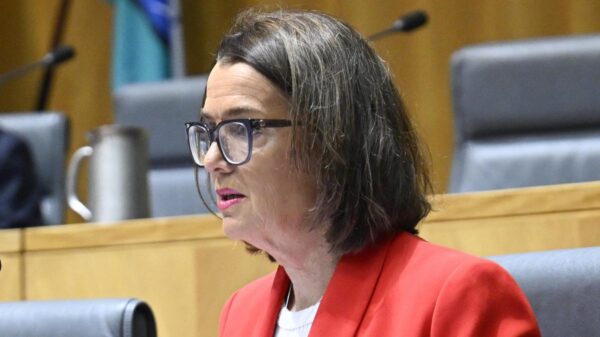Divorce rates in Australia have reached their lowest point since the introduction of no-fault divorce, with only 2.1 divorces registered for every 1,000 Australians aged 16 and over in 2024. This decline, coupled with an increase in the average duration of marriages, reflects significant shifts in social dynamics and economic pressures facing couples today. While the trend might be perceived as a positive sign of relationship stability, the underlying causes paint a more complex picture.
Marriages Evolving Amid Economic Pressures
Since the landmark reform in 1975, which allowed couples to divorce without proving fault, the landscape of marriage in Australia has transformed. Couples are now more likely to separate without the stigma attached to previous fault-based grounds such as adultery and drunkenness. Today, the average age of divorce is 47 for men and 44 for women, indicating that Australians are marrying later in life and staying longer in their unions. In fact, marriages are lasting nearly 11 months longer before divorce compared to pre-pandemic figures in 2019.
However, this extended duration does not necessarily indicate healthier relationships. Economic factors play a significant role in couples opting to remain together despite potential issues. Many Australians are choosing to cohabit before marriage, allowing for a trial period in their relationships. Additionally, societal attitudes towards marriage have shifted, with many viewing it as a partnership rather than a lifelong commitment.
The overall marriage rate has also fallen significantly, from 13 marriages per 1,000 people aged 16 and over to 5.5 in 2024. This decline marks a stark contrast to the post-war baby boom era when marriage rates soared. As of 2023, over 83% of marriages were conducted by civil celebrants rather than religious ministers, indicating a shift away from traditional religious ceremonies.
Fertility Rates and Family Dynamics
As marriages become less common, so too do childbirth rates. The total fertility rate in Australia has hit a record low, with many individuals citing economic insecurities as a reason for delaying or forgoing having children. The proportion of women without children over their lifetime has increased from 8.5% in 1981 to 16.4% in 2021.
Financial burdens associated with raising children, coupled with high housing costs and economic uncertainty, have led many Australians to reconsider their family planning. As a result, children are increasingly born to unmarried parents, shifting the traditional family structure. While most children are still born to married couples, the percentage has decreased significantly over the years.
The rising cost of living is causing many couples to rethink their relationship choices. For those already facing financial pressure, separation may not be a feasible option. Innovative arrangements, such as “Living Apart Together” (LAT), where couples maintain their relationship while living separately, are becoming more common. This approach allows parents to provide stability for their children without the complications of a new partner moving in post-divorce.
Delma and Frank Murray, who celebrated their 80th wedding anniversary in 2023, serve as a poignant reminder of lasting unions amid a changing societal landscape. Their story highlights the evolving nature of marriage and family in Australia, where traditional norms are being challenged by modern realities.
In conclusion, the decline in divorce rates and the shifting dynamics of marriage and family life in Australia reflect broader social changes. Economic pressures are reshaping how individuals view relationships, leading to longer marriages out of necessity rather than choice. As these trends continue to evolve, it remains crucial for policymakers to adapt to the changing landscape of family structures in order to support the diverse needs of the Australian population.































































